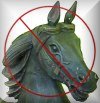
Be sure to consult our Buyer's Guide & Fakes Database before purchasing a carousel figure. Each day, more and more knock-offs come on the market. Some look old but looks can be deceiving. Become an informed buyer.
|
|
|
 |
|
|
Articles, photos and other carousel and/or amusement park related content always needed. If you have something you would like published on this website please contact us at the email address below.
©2022 - Zubee Internet Services. All rights reserved. CarouselNet.com™, Carouselstores.com™, Carouselstores.net™, CarouselsNet.com™, CarouselsOnLine.com™ and CarouselResources.com™ are the property of Zubee Internet Services and may not be used without written consent from same. Images, text and all other components of this site may not be used without express written permission from the site owners.
webmaster@carouselsonline.com |
|